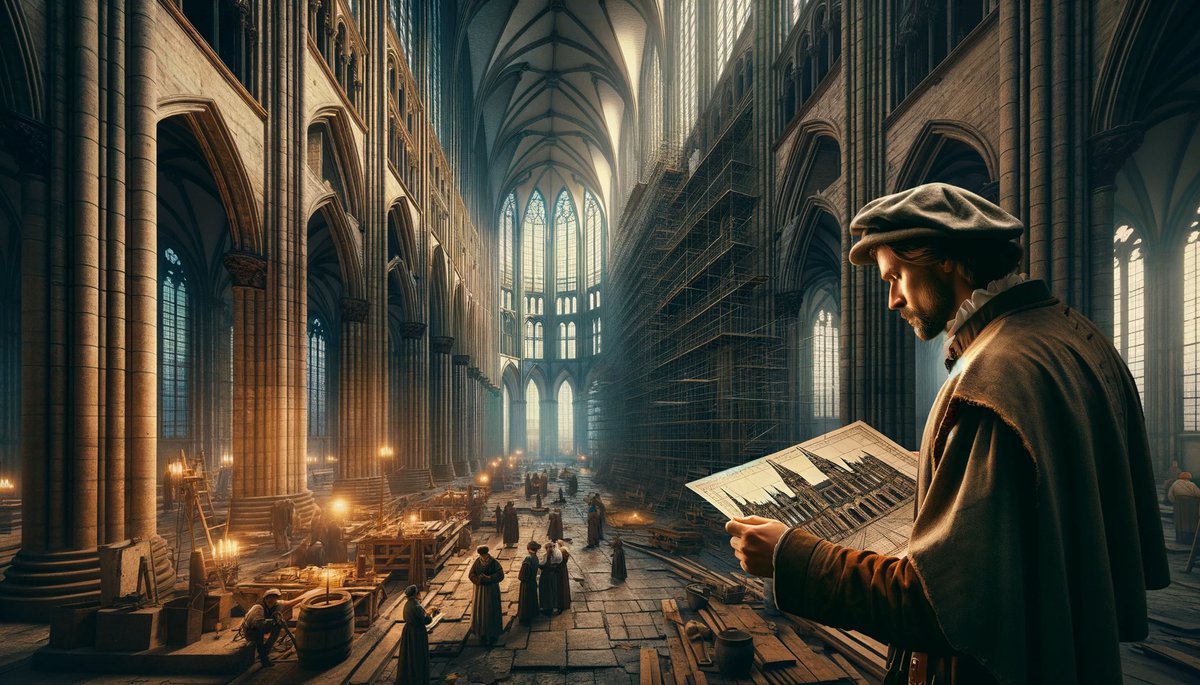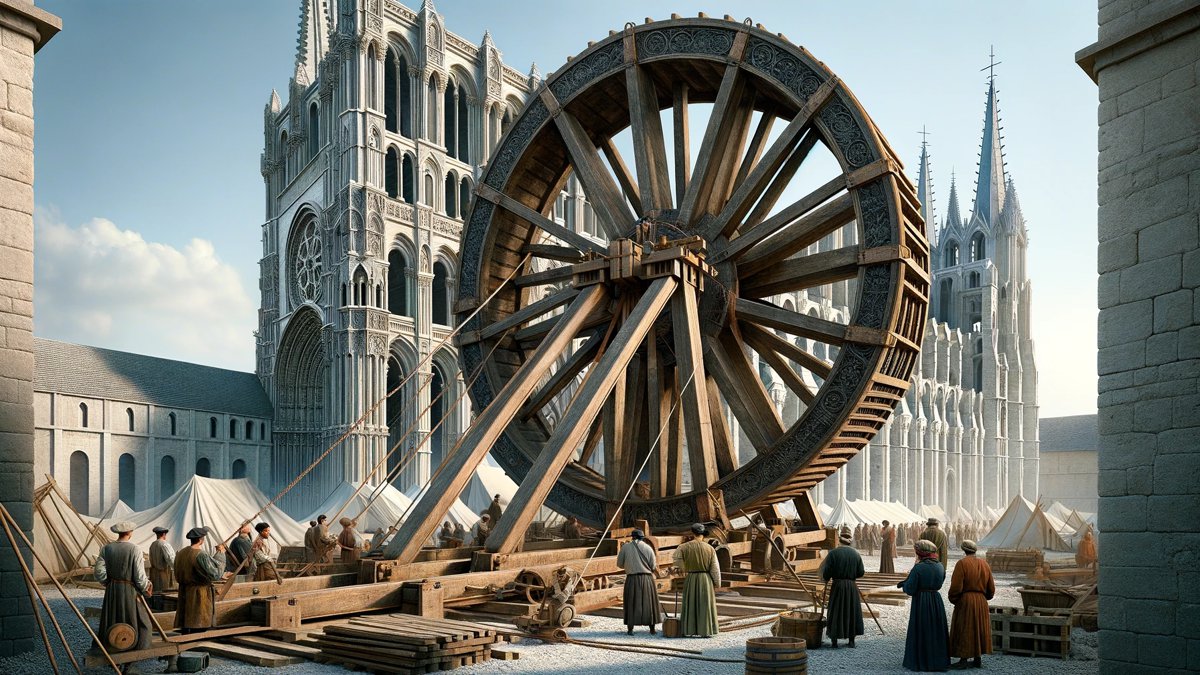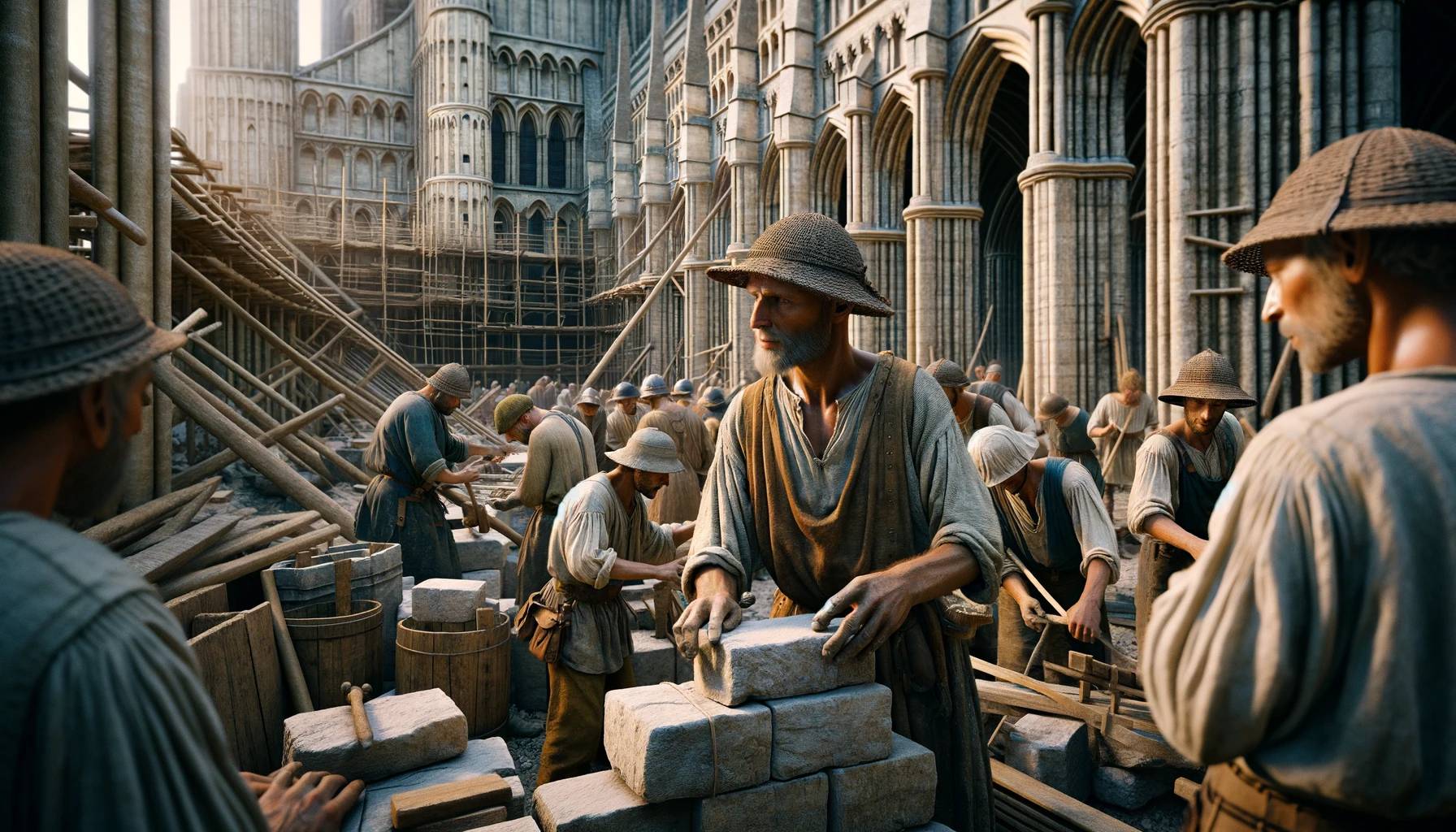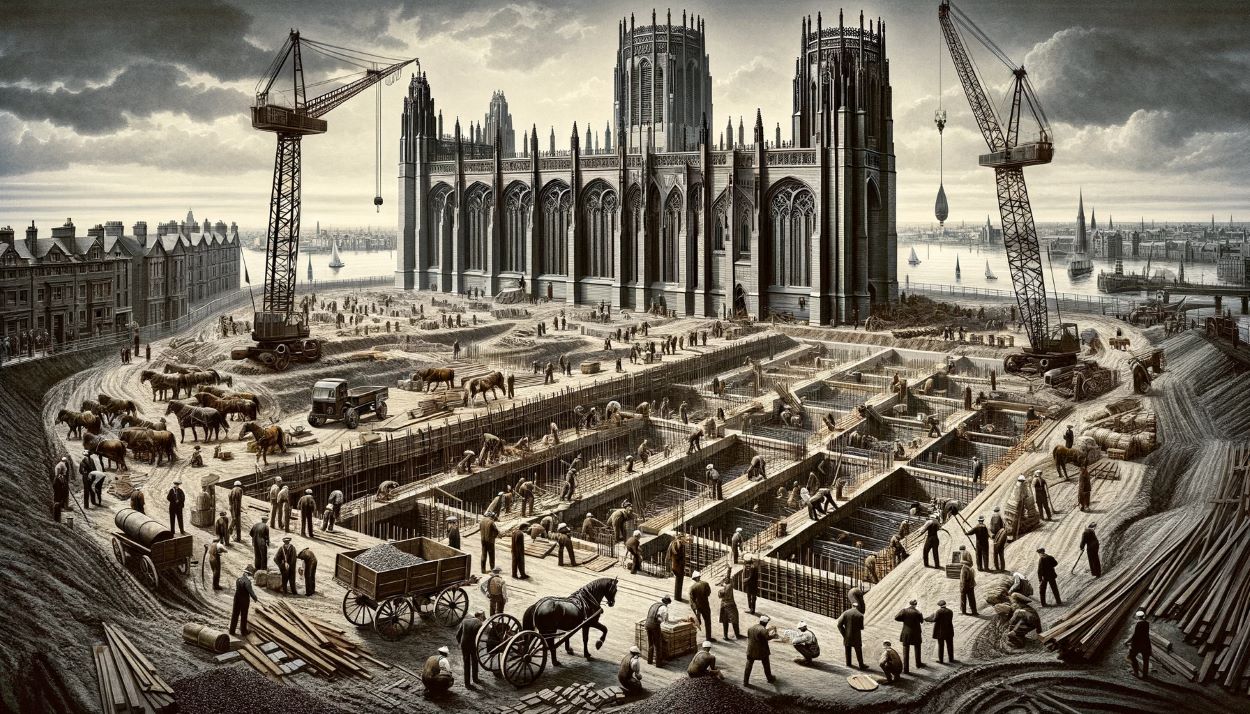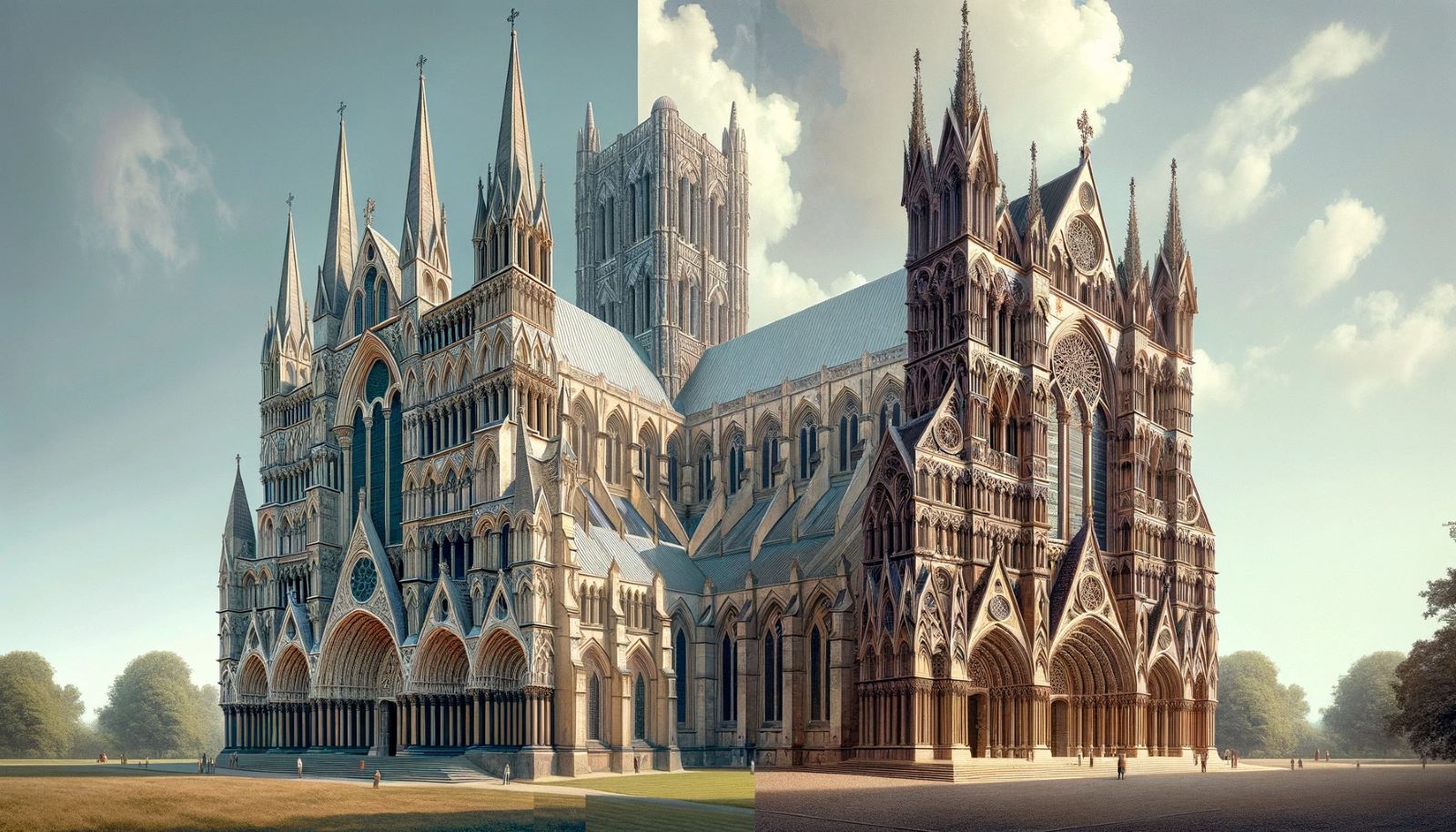Home>Arts and Culture>Why Was Salisbury Cathedral Built


Arts and Culture
Why Was Salisbury Cathedral Built
Published: February 17, 2024
Jason DeRose, Managing Editor at Christian.net, uses his expertise in religion and journalism to deepen understanding of faith's societal impacts. His editorial leadership, coupled with a strong academic background, enriches the platform’s diverse content, earning him recognition in both journalism and religious circles.
Discover the history and significance of Salisbury Cathedral, a masterpiece of medieval architecture and a testament to the arts and culture of its time. Explore the reasons behind its construction and the enduring legacy it holds.
(Many of the links in this article redirect to a specific reviewed product. Your purchase of these products through affiliate links helps to generate commission for Christian.net, at no extra cost. Learn more)
Table of Contents
Introduction
Salisbury Cathedral, also known as the Cathedral Church of the Blessed Virgin Mary, holds a significant place in the history of architecture, religion, and culture. Situated in the heart of Salisbury, England, this magnificent structure has stood the test of time, captivating visitors with its awe-inspiring beauty and rich historical significance.
From its towering spire that pierces the sky to its intricately adorned interior, Salisbury Cathedral stands as a testament to the ingenuity and craftsmanship of its creators. Its construction, which began in 1220 and was completed in a remarkably short time of 38 years, is a remarkable feat that continues to inspire wonder and admiration.
The cathedral's enduring presence serves as a living chronicle of the medieval era, offering a glimpse into the architectural prowess and spiritual devotion of the time. As visitors approach its grand façade and step into its hallowed halls, they are transported back in time, enveloped in the aura of centuries past.
Salisbury Cathedral's significance extends beyond its architectural grandeur. It has been a site of pilgrimage, a center of religious worship, and a symbol of spiritual devotion for countless individuals throughout the ages. Its enduring legacy has left an indelible mark on the cultural and spiritual landscape of England, drawing visitors from around the world to marvel at its splendor and immerse themselves in its profound history.
As we delve into the historical context, purpose of construction, architectural features, symbolism and significance, and the lasting legacy of Salisbury Cathedral, we will uncover the captivating story behind this iconic structure and gain a deeper appreciation for its enduring allure.
Read more: Why Was The Salisbury Cathedral Built
Historical Context
The construction of Salisbury Cathedral unfolded during a pivotal period in England's history, marked by significant cultural, religious, and political developments. In the early 13th century, the landscape of England was shaped by the reign of King John, the Magna Carta, and the emergence of Gothic architecture.
Amidst this backdrop, the Bishop of Old Sarum, Richard Poore, sought to relocate the cathedral from the ancient hill fort of Old Sarum to a more favorable location. This decision was driven by a desire to establish a new spiritual and administrative center that would better serve the needs of the growing population. The site chosen for the new cathedral was in Salisbury, a location that offered strategic advantages and a more hospitable environment for the clergy and worshippers.
The ambitious endeavor to construct a grand cathedral in Salisbury was not only a testament to the religious fervor of the era but also a reflection of the growing influence of Gothic architecture. The transition from Romanesque to Gothic style marked a significant shift in architectural techniques, allowing for soaring vaults, pointed arches, and expansive windows that flooded the interior with ethereal light.
The construction of Salisbury Cathedral was a monumental undertaking that required meticulous planning, skilled labor, and unwavering dedication. Master craftsmen, stonemasons, and laborers worked tirelessly to bring the vision of the cathedral to life, employing innovative building techniques and harnessing the finest materials available.
The cathedral's construction was not without its challenges, yet the collective determination of those involved propelled the project forward. The speed with which the cathedral was completed, a mere 38 years, stands as a testament to the remarkable efficiency and commitment of the medieval builders.
As the cathedral neared completion in 1258, it stood as a crowning achievement of medieval architecture, a symbol of spiritual devotion, and a beacon of hope for the community it served. Its completion marked a defining moment in England's architectural and religious history, leaving an indelible imprint on the cultural landscape for generations to come.
The historical context surrounding the construction of Salisbury Cathedral provides a compelling narrative of ambition, innovation, and unwavering faith, offering a window into a pivotal chapter in England's past. This rich tapestry of history continues to resonate within the hallowed walls of the cathedral, inviting visitors to immerse themselves in the enduring legacy of this architectural marvel.
Purpose of Construction
The construction of Salisbury Cathedral was driven by a confluence of religious, political, and practical motivations, each contributing to the overarching purpose of creating a monumental edifice that would transcend its physical form and serve as a beacon of spiritual devotion and civic pride.
At the heart of the cathedral's construction lay the fervent desire to establish a new spiritual center that would cater to the evolving needs of the burgeoning population. The decision to relocate the cathedral from the ancient hill fort of Old Sarum to the more accessible and hospitable environs of Salisbury was a strategic move aimed at providing a more conducive setting for religious worship and administrative functions. This relocation was not merely a matter of convenience; it symbolized a profound shift in the ecclesiastical landscape, signaling a commitment to better serve the spiritual and pastoral needs of the community.
Furthermore, the construction of Salisbury Cathedral was intricately intertwined with the assertion of political authority and the assertion of the bishop's influence. By erecting a grand cathedral in Salisbury, the Bishop of Old Sarum, Richard Poore, sought to establish a visible and enduring symbol of ecclesiastical power and prestige. The cathedral's imposing presence and architectural magnificence served as a tangible expression of the bishop's authority, reinforcing the pivotal role of the church in the societal and political fabric of medieval England.
In addition to its religious and political significance, the construction of Salisbury Cathedral also served practical purposes. The cathedral was designed to accommodate a growing community of clergy, provide a sacred space for religious ceremonies, and serve as a center for administrative and educational activities. Its architectural layout and functional design reflected a meticulous consideration of the practical needs of the clergy and the faithful, ensuring that the cathedral would serve as a hub of spiritual and communal life.
As the construction of Salisbury Cathedral unfolded, these multifaceted purposes converged to shape a grand vision that transcended mere architectural ambition. The cathedral was conceived as a testament to faith, a symbol of authority, and a sanctuary for the soul. Its purpose extended beyond the physical realm, encompassing the spiritual, political, and communal aspirations of the era, and continues to resonate within its sacred precincts to this day.
The purpose of construction of Salisbury Cathedral thus embodies a rich tapestry of motivations, each weaving together to create a monumental testament to the enduring spirit of human endeavor and spiritual devotion.
Architectural Features
The architectural features of Salisbury Cathedral stand as a testament to the ingenuity, artistry, and technical prowess of its medieval builders. From its soaring spire to its intricate carvings, the cathedral showcases a harmonious blend of Gothic design elements and innovative construction techniques that continue to captivate visitors and scholars alike.
1. Towering Spire
At the heart of Salisbury Cathedral's architectural splendor rises the iconic spire, soaring to a height of 404 feet, making it the tallest of its kind in England. The spire, crafted from limestone, serves as a striking example of medieval engineering and architectural ambition. Its slender form and graceful proportions exemplify the mastery of the craftsmen who dared to reach for the heavens, creating a structure that has become synonymous with the cathedral's identity.
Read more: Salisbury Cathedral: How It Was Built
2. Magnificent Nave
The cathedral's nave, with its awe-inspiring dimensions and ethereal beauty, beckons visitors to traverse its hallowed expanse. The soaring vaults, pointed arches, and slender columns of the nave exemplify the quintessential elements of Gothic architecture, allowing natural light to cascade through the expansive windows, creating an atmosphere of celestial grandeur.
3. Exquisite Cloisters
The cloisters of Salisbury Cathedral, with their delicate tracery and serene ambience, offer a tranquil retreat within the bustling precincts of the cathedral. The intricately carved stone vaults and graceful arches of the cloisters provide a testament to the skill and artistry of the medieval craftsmen, inviting contemplation and reflection amidst their timeless beauty.
4. Stained Glass Windows
The cathedral's stained glass windows, renowned for their vibrant hues and intricate designs, infuse the interior with a kaleidoscope of light and color. These masterpieces of medieval craftsmanship depict biblical narratives and saints, serving as visual chronicles of faith and devotion that continue to inspire awe and reverence.
5. Ornate Sculptures and Carvings
Throughout the cathedral, intricate sculptures and carvings adorn the walls, capitals, and doorways, each bearing the mark of the artisans who brought them to life. From the delicate foliage motifs to the expressive depictions of biblical scenes, these ornate details enrich the cathedral's interior, offering a glimpse into the artistic sensibilities of the era.
Read more: Where Is Salisbury Cathedral
6. Towering Buttresses
The cathedral's exterior is adorned with towering buttresses that not only lend structural support but also contribute to its architectural grandeur. These majestic stone structures, with their graceful forms and intricate detailing, stand as a testament to the innovative engineering and design principles employed in the construction of the cathedral.
Salisbury Cathedral's architectural features, with their timeless elegance and profound symbolism, embody the collective vision and craftsmanship of generations past. Each element, meticulously crafted and thoughtfully integrated, contributes to the cathedral's enduring legacy as a masterpiece of medieval architecture and a testament to the boundless creativity of the human spirit.
Symbolism and Significance
The symbolism and significance of Salisbury Cathedral extend far beyond its architectural magnificence, encompassing profound spiritual, cultural, and historical implications that resonate with visitors and scholars alike. As a testament to the enduring legacy of medieval craftsmanship and spiritual devotion, the cathedral embodies a rich tapestry of symbolism and significance that transcends its physical form.
Spiritual Symbolism
Salisbury Cathedral stands as a sacred embodiment of faith and spiritual aspiration. Its soaring spire, reaching skyward in a testament to the human yearning for transcendence, serves as a visual metaphor for the eternal pursuit of divine connection. The cathedral's nave, with its celestial vaults and ethereal light, creates an atmosphere of otherworldly splendor, inviting visitors to contemplate the mysteries of faith and existence. The stained glass windows, with their luminous depictions of biblical narratives and saints, serve as vivid expressions of divine revelation, illuminating the interior with a kaleidoscope of sacred imagery. Every aspect of the cathedral's design and ornamentation carries layers of spiritual symbolism, inviting contemplation and reverence.
Cultural Significance
Beyond its religious symbolism, Salisbury Cathedral holds profound cultural significance as a repository of history, art, and collective memory. As a masterpiece of Gothic architecture, the cathedral stands as a testament to the ingenuity and artistic vision of its medieval builders, offering a window into the aesthetic sensibilities and technical prowess of the era. The intricate carvings, sculptures, and decorative elements within the cathedral bear witness to the artistic heritage of the medieval period, preserving a legacy of craftsmanship and creativity. Moreover, the cathedral's role as a center of pilgrimage, religious devotion, and communal gathering has woven it into the fabric of England's cultural identity, endowing it with a significance that transcends its religious function.
Read more: Why Was The Milan Cathedral Built
Historical Legacy
Salisbury Cathedral's historical legacy reverberates through the annals of time, bearing witness to the triumphs and tribulations of England's past. Its construction during a pivotal period in England's history, marked by political upheaval and cultural transformation, reflects the enduring resilience and creative spirit of the human endeavor. The cathedral's relocation from Old Sarum to Salisbury represented a decisive moment in the ecclesiastical and administrative landscape, leaving an indelible mark on the historical trajectory of the region. As a living monument to the medieval era, Salisbury Cathedral serves as a tangible link to the past, inviting visitors to immerse themselves in the rich tapestry of England's history.
Enduring Significance
Salisbury Cathedral's enduring significance lies in its ability to transcend time and space, offering a timeless sanctuary for spiritual contemplation and cultural enrichment. Its symbolism and significance, woven into every stone and arch, continue to inspire awe and reverence, inviting visitors to embark on a journey of discovery and introspection. As a living testament to the enduring power of human creativity and spiritual devotion, Salisbury Cathedral stands as a beacon of hope and inspiration, inviting all who cross its threshold to partake in its profound legacy.
The symbolism and significance of Salisbury Cathedral, rooted in spirituality, culture, and history, converge to create a narrative of enduring resonance, inviting visitors to behold its splendor and immerse themselves in its timeless allure.
Legacy and Impact
The legacy of Salisbury Cathedral transcends the boundaries of time, leaving an indelible imprint on the cultural, spiritual, and architectural landscape of England. Its enduring impact reverberates through the centuries, shaping the collective memory and inspiring generations with its profound significance.
Cultural and Architectural Legacy
Salisbury Cathedral stands as a testament to the enduring legacy of medieval craftsmanship and Gothic architecture. Its soaring spire, magnificent nave, and exquisite cloisters embody the pinnacle of architectural achievement, serving as a source of inspiration for architects, artists, and admirers of beauty. The cathedral's architectural legacy extends beyond its physical form, influencing subsequent generations of builders and craftsmen, who have drawn upon its timeless design principles and structural innovations.
Spiritual and Communal Impact
As a sacred sanctuary and center of religious devotion, Salisbury Cathedral has left an indelible impact on the spiritual landscape of England. It has been a site of pilgrimage, a place of solace and reflection, and a beacon of hope for countless individuals seeking spiritual nourishment. The cathedral's enduring impact on the communal fabric is evident in its role as a gathering place for worship, celebration, and contemplation, fostering a sense of unity and shared heritage among visitors from diverse backgrounds.
Educational and Artistic Influence
The cathedral's legacy extends to the realms of education and artistic expression, serving as a living classroom for students of history, architecture, and theology. Its intricate carvings, stained glass windows, and ornate sculptures have provided a rich tapestry for artistic inspiration, nurturing a legacy of creativity and cultural enrichment. Through its educational programs and outreach initiatives, Salisbury Cathedral continues to impart knowledge and foster a deep appreciation for the arts and humanities.
Historical Significance
Salisbury Cathedral's impact on the historical narrative of England is profound, bearing witness to pivotal moments in the nation's history. Its construction and relocation from Old Sarum to Salisbury represent a defining chapter in the ecclesiastical and administrative evolution of the region, leaving an enduring mark on the historical trajectory of England. As a living monument to the medieval era, the cathedral serves as a tangible link to the past, inviting visitors to immerse themselves in the rich tapestry of England's history.
Continued Relevance and Inspiration
The legacy and impact of Salisbury Cathedral continue to resonate with visitors from around the world, inviting them to behold its splendor and immerse themselves in its timeless allure. Its enduring significance lies in its ability to transcend time and space, offering a timeless sanctuary for spiritual contemplation and cultural enrichment. As a living testament to the enduring power of human creativity and spiritual devotion, Salisbury Cathedral stands as a beacon of hope and inspiration, inviting all who cross its threshold to partake in its profound legacy.
Salisbury Cathedral's legacy and impact, rooted in spirituality, culture, and history, converge to create a narrative of enduring resonance, inspiring awe and reverence for generations to come.


